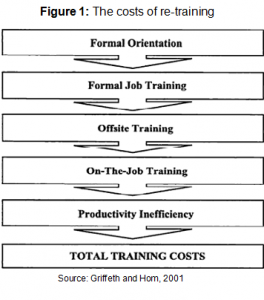In Tim Burton’s 2005 adaption of Charlie and the Chocolate Factory, Johnny Depp’s character Willy Wonka is faced with the difficult prospect of deciding who to select as the heir to his factory. Given the choice of five “nasty little children”, Willy Wonka decides on Charlie, not because he is the best kid for the job, but because he is the “least rotten” candidate.
Recent research shows that a number of skills shortages are beginning to re-emerge across the country. According to the Federal Gove
ment, skilled vacancies have increased by 16% since September last year (Gettler, 2010). Compounding this problem, a large number of businesses were forced to downsize their workforces dramatically during the Global Financial Crisis (GFC) and are subsequently finding it more difficult to attract a strong pool of candidates for some of their more specialised vacancies this time around. With almost all forecasts pointing towards an increasingly tight labour market during 2011, it is not surprising that some HR professionals and hiring managers are beginning to feel the pressure to lower their selection standards in order to fill vacancies quickly.
It takes a particularly strong hiring manager to decide against filling a vacancy due to insufficient standards amongst available candidates. There are three main reasons for this. Firstly, this will often mean disagreeing with the majority of other stakeholders. Often line managers will be keen to make an appointment sooner rather than later due to operational purposes. If your company utilises recruitment consultants, the hiring manager often has a second group of stakeholders arguing the case for appointment and then there are the candidates who would obviously love you to appoint them and may be very likeable and personally impressive (without having the requisite competencies for the role). Secondly, all of our decision making tends to be more biased than we think. It is easy for self-fulfilling thinking to creep into important selection decisions. In situations where a hiring manager only has one or two candidates for a role, they will almost always want those candidates to be suited to the role. It’s only natural then that a hiring manager might unconsciously focus more on a candidate’s positive attributes throughout the selection process. Finally, operational constraints are real and if a business is unable to achieve its goals due to being short staffed, then the pressure to fill vacancies can be immense. Organisations can even have statutory or contractual obligations in place that require specific roles to be filled so there can sometimes even be very real legal and commercial risks associated with job vacancies.
Research shows that making poor recruitment decisions can be a costly mistake

- Research shows that employees with a strong job fit, miss 43% fewer days of work (Watson Wyatt, 2006 – 2009) and deliver between 20% (Mori, 2006) – 43% (Hay, 2009) higher performance.
- It has been estimated that the cost of dismissing a poor performer and having to recruit their replacement, can be as much as 3 times the annual salary (The Corporate Leadership Council, 2010).
- Monitoring the poor performance of just one individual often takes a minimum of 10% of a manager’s time.
- Having poor performers in the workplace often means poor morale amongst other employees
- Client satisfaction is also often impacted
Adopting a Willy Wonka approach is often hard to avoid. However, by supplementing your recruitment process with methods that are proven to be reliable and valid, will help you make better decisions.
Despite popular belief, research shows that interviews are not the most valid selection measure. As many as 1/3 of candidates misrepresent themselves at an interview and 17% stretch the truth about their previous experience. This does not mean that managers should abandon interviews. However, they should be aware of their limitations and be careful to use a structured and standardised interview process.
So what else should managers be doing when making selection decisions? The overwhelming scientific evidence suggests that employers should in fact be measuring an individual’s intellectual abilities via psychometric testing at the same time as conducting a structured interview (Schmidt and Hunter, 1998). In fact, when combined with a robust structured interview, up to 60% of the variability in performance on the job can be predicted via a pre-placement psychometric assessment.
Selecting the right applicant for a role is always going to be a difficult task, but it’s important to get it right. As the labour market does get tighter, it is just as important to be selective when hiring new staff. Hiring people who genuinely do meet the job requirements improves morale, increases productivity and ultimately drives the success of your organisation
The next time you are faced with a pool of applicants, don’t be a Willy Wonka manager! Take the time to think through your decision – Are you hiring the person because they genuinely meet the selection criteria? Or are they simply just the “least rotten” of the bunch?
For Further Reading:
Gettler, L. (2010). Falling Short: Australia faces a massive skills shortage. HR Monthly, Nov, 38-43
Schmidt & Hunter. (1998). The Validity and Utility of Selection Methods in Personnel Psychology: Practical and Theoretical implications of 85 years of research findings. Psychological Bulletin, 124(2), 262-274

